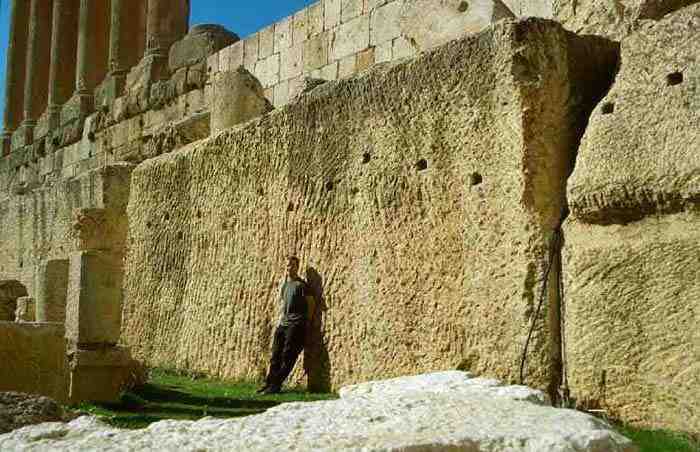
Orthodox as well as alternative publications make note of many thousands of large stones moved by the ancients. From an academic establishment perspective, the tonnage is casually mentioned as though none of us need raise an eyebrow as to how it was done in primitive times with a lack of today’s technology and capabilities.
To give you some context about how heavy these numbers are, I list here some modern comparisons. Refer to this table when you read about the ancients moving massive stones from the tens- to hundreds-of-tons. Find a modern object in the table near the same tonnage as the stone(s) in question, and imagine removing the wheels of said object and trying to lift it (using what?) or drag it to the building site using a wooden sled or wooden rollers beneath the megalith (assuming you have some miraculous way to get them under it). If you aren’t wide-eyed-astonished and incredulous at the orthodox narratives, there’s simply nothing I can do to help you with your think-machine deficiencies.
Logistic difficulties lie in the details. Objective reality lies in the engineering requirements. They cannot be ignored. Each stone must be:
- Quarried – all the myriad details that requires of the ancient world, including cutting away the base from the ground (and not crushing someone doing the cutting by hand)
- Lifting/moving the stone out of the quarry
- Transporting the stone from the quarry to the building site
- Lifting the stone again to its placement in the structure
- Cutting/shaping the stone for precise fitment to the stones next to it (gaps tighter than the thickness of a razor blade)
- Final shifting/movement of the stone against the other stones next to it in the structure (achieving said gaps)
Academic orthodoxy will ignore these logistical nightmares of engineering. Don’t be fooled. If we are interested in uncovering the objective reality of how these stones were created and moved, we cannot pretend the challenges did not exist for our ancient engineers.
Weight Comparisons
| Modern Object* | Tons* |
|---|---|
| Automobile | 1.3 - 3.3 |
| Cessna 310, 6-passenger plane | 2.7 |
| African Bush Elephant (avg. weight) | 6.5 |
| Semi-truck & Trailer (empty) | 15 |
| Lear Jet | 17 |
| Semi-truck & Trailer (max. loaded) | 40 |
| Interstate Expressway Legal Weight Limit (USA) | 40 |
| Gulfstream G650 jet | 50 |
| Boeing 737 jet | 64 |
| Space Shuttle | 82 |
| Boeing 727 jet | 85 - 105 |
| Diesel Train Locomotive | 120 - 200 |
| Blue Whale | 220 |
| Airbus A350-1000 jet | 340 |
| Lockheed C5-Galaxy Transport Jet | 416 |
| Boeing 747 jet | 490 |
| Airbus A380 jet | 600 |
| SpaceX Starship rocket | 1,430 |
| SpaceX Falcon Heavy rocket | 1,565 |
| SpaceX Starship Super Heavy rocket | 1,800 |
| Space Shuttle (launch weight) | 2,200 |
| NASA Crawler-Transporter (for Saturn V & Space Shuttle launches) | 3,000 |
| Saturn V rocket (Apollo launches) | 3,100 |
“Cutting right to the chase, a modern locomotive engine weighs 200 tons. Take that steel leviathan off the track and give a large team of men some ropes and let’s see how far they can pull it or if they can lift it up at all.”
– Will Hart: The Ancient Enigma – Moving the Megaliths, 2002 (author of The Genesis Race)
* 1 Ton = 1 Short ton = 2,000 pounds
All aircraft weights shown are maximum take-off weight
All rocket weights shown are full launch weight
Featured photo: Airbus A350 photo by Lutz Bloom via Flickr via CC BY-SA 2.0 DEED license
Fair Use Notice:
– In good faith, this work contains fair use of copyrighted and non-copyrighted images from the public domain & the web for non-commercial & nonprofit educational purposes.
– This work is distributed free of charge.
– The author has neither monetized this work nor sought any profit from its distribution.
– Copyright disclaimer under section 107 of the copyright act 1976: Allowance is made for “Fair Use” for purposes such as criticism, comment, news reporting, teaching, scholarship, and research. Fair use is a use permitted by copyright statutes that might otherwise be infringing. Non-profit, educational or personal use tips the balance in favor of fair use.
– This work contains original work of commentary, education and critical analysis.